In this blog post, you will learn how insurers integrate advanced data analytics models with AI and machine learning to streamline their underwriting and claims management processes, enhance customer experience, and improve profitability.
The insurance industry is a high-risk sector that needs to navigate underwriting challenges, tricky claims, evolving regulations, and growing customer expectations. It is seeing a paradigm shift and rapid transformation through the adoption of advanced analytics which can significantly enhance the underwriting and claims management processes.
How Does Advanced Analytics Transform Underwriting?
Traditionally, underwriting has been a labor-intensive process. Historically, underwriters have relied on manual assessments, past experiences, gut feelings, and limited data sources to evaluate risks and determine policy terms.
However, by combining emerging technologies and AI-powered models, insurers can automate the underwriting process to a significant extent. They can assess risks more effectively using vast datasets, third-party information, and real-time analytics.
1. Enhanced Risk Assessment and Decision-Making
The new-age underwriting process is leveraging advanced data analytics to refine risk assessment by incorporating multiple variables. This also includes access to third-party data, such as:
- Telematics
- Wearables
- Credit scores
- Health data
These data points help insurers evaluate risk more precisely and provide a more comprehensive view of potential policyholders for better decision-making related to policy issuance, pricing, and coverage.
For example, insurers can use advanced analytics to enable straight-through processing (STP) for simple risks, while complex cases can be flagged for human review.
This approach helps insurers reduce turnaround times for policy decisions. Besides, it also enhances accuracy and lowers administrative costs.
As per McKinsey & Company, a midsize P&C insurer used advanced analytics and third-party data to deliver quotes and bind policy in minutes rather than days leading to new business premiums rising by 50%. Further, by diverting low-risk accounts to STP, it expects to more than double STP rates while maintaining its loss ratio within one to two years.
2. Streamlined Underwriting with Automation
With the help of advanced analytics and machine learning, insurers can automate the underwriting processes and dramatically reduce manual labor input.
This helps insurers improve efficiency. As a result, they can quote and bind policies much faster.
According to a case study shared by McKinsey, a mid-sized insurer developed a digital platform using analytics that helped it cut down manual efforts by 90%. This enabled them to dramatically simplify the agent experience and ensure faster, more accurate policy issuance.
Advanced Analytics in Claims Management
Claims management is the backbone of customer satisfaction in the insurance sector, which could benefit greatly from advanced analytics.
Whether handling auto, health, or property claims, efficient and accurate claims processing is essential for insurers and their customers. Below are some examples of how advanced analytics is helping insurers manage claims and boosting customer experiences.
1. Fraud Detection and Prevention
Insurance fraud is a significant concern for insurers concerning claims management. According to the Coalition Against Insurance Fraud, insurance fraud costs the U.S. $308.6 billion annually.
By incorporating data analytics, insurers can use predictive models and machine learning to detect fraudulent claims before they escalate. Some of the techniques involved are data mining and anomaly detection which enable insurers to detect and flag suspicious claims early. As a result, insurers can save on the insurance claim payouts and safeguard their profitability.
For example, white paper illustrates key findings including how advanced fraud detection models, driven by vast amounts of data, have helped insurers reduce fraudulent payments by up to 25%.
Additionally, incorporating AI and Machine Learning (ML) in claims management has a 20% reduction in fraudulent claims, highlighting the impact of advanced technologies in improving efficiency and accuracy in the insurance sector.
2. Automation and Efficiency in Claims Processing
Automation through advanced analytics is helping insurers streamline their claims management process.
For instance, by integrating artificial intelligence (AI) and robotic process automation (RPA), insurers can handle routine tasks that include:
- Document verification
- Initial assessments
- Data entry without manual intervention.
This not only reduces human errors but also speeds up the resolution process.
For example, claims can now be processed end-to-end through digital portals powered by AI tools to analyze data from various sources, including photos or videos uploaded by customers, to estimate damages quickly. This not only reduces claims cycle time but also enhances accuracy and transparency.
As per reports, insurance companies that have implemented predictive analytics have seen claim processing times reduced by as much as 30%.
3. Improving Customer Experience
To meet and exceed evolving customer expectations for seamless, digital experiences, insurers can use advanced analytics to personalize the interactions and streamline the claims process based on individual preferences.
As McKinsey suggests, some customers may prefer fully digital claims experiences, while others value the option to speak with an agent for complex issues.
By providing tailored options, insurers can boost customer satisfaction and retention rates.
As per personalization can help increase revenue by 60%, customer retention by 81%, improved engagement by 89%, and boost in sales and marketing conversion rates by 75%.
Integrating Advanced Analytics in Policy and Claims Management
Integrating advanced analytics in policy underwriting and claims management isn’t just about implementing new technology—it requires strategic integration across the underwriting and claims management processes.
Therefore, insurers must focus on creating agile, cross-functional teams that combine expertise in data science, IT, and business processes to harness the full potential of analytics.
Additionally, as analytics become more embedded in day-to-day operations, insurers can track key performance indicators (KPIs) such as claims processing times, fraud detection rates, and customer satisfaction scores. This continuous monitoring will enable insurers to identify areas for improvement and maintain a competitive edge.
Most importantly, effective analytics depends on integrating data from various sources and the quality of data. By consolidating internal and external data, insurers can improve decision-making and operational efficiency.
For instance, by incorporating healthcare data into insurance claims processes, insurers can assess medical claims more accurately. This can help reduce overpayments and enhance fraud detection.
Conclusion
Advanced analytics is revolutionizing the way insurers handle policy underwriting and manage claims. When combined with emerging technologies, such as AI and machine learning, it enables insurers to operate more efficiently, reduce costs, and improve customer satisfaction.
Further, as these technologies continue to evolve, the future of insurance will be defined by how effectively companies can leverage analytics to meet customer needs and optimize performance.
At Anaptyss, we offer and help insurers co-create new-age insurance fraud detection and prevention solutions powered by AI, machine learning algorithms, and advanced analytics, to identify patterns, anomalies, and inconsistencies and detect potentially fraudulent claims or activities.
To know more, contact us today at info@anaptyss.com



